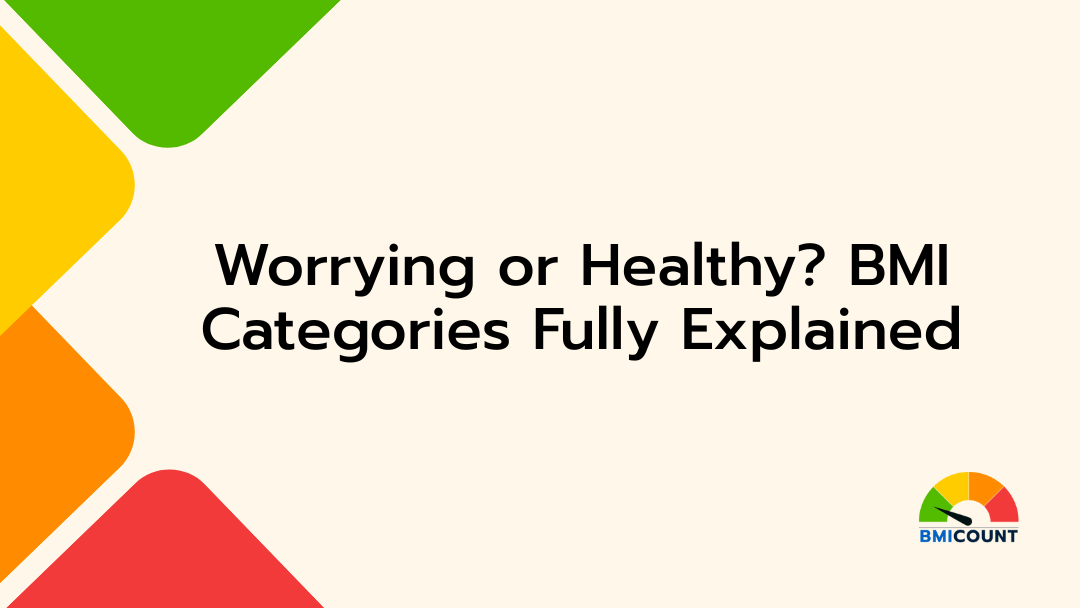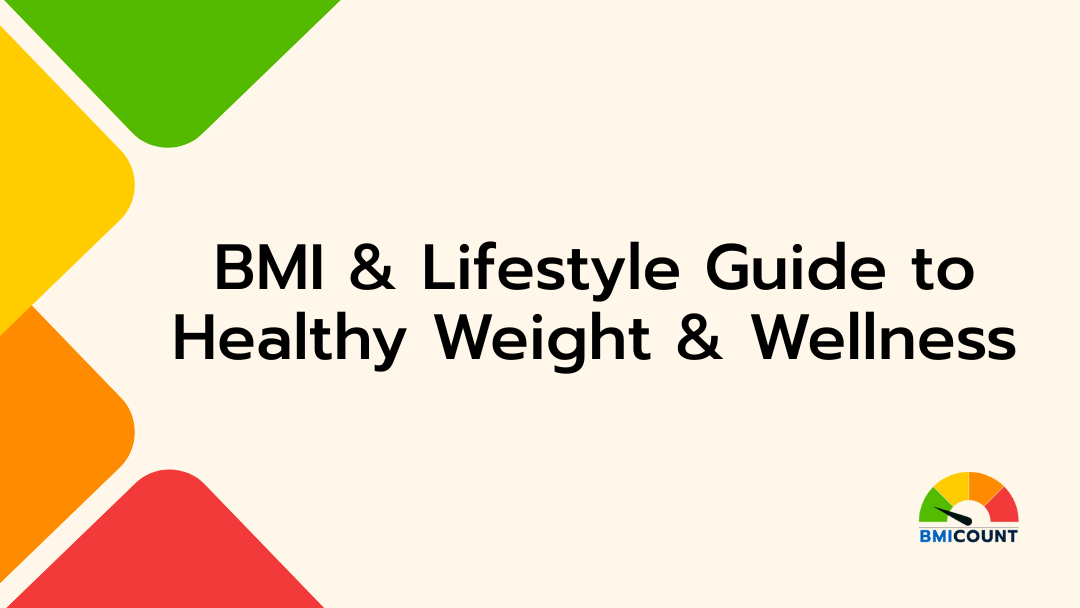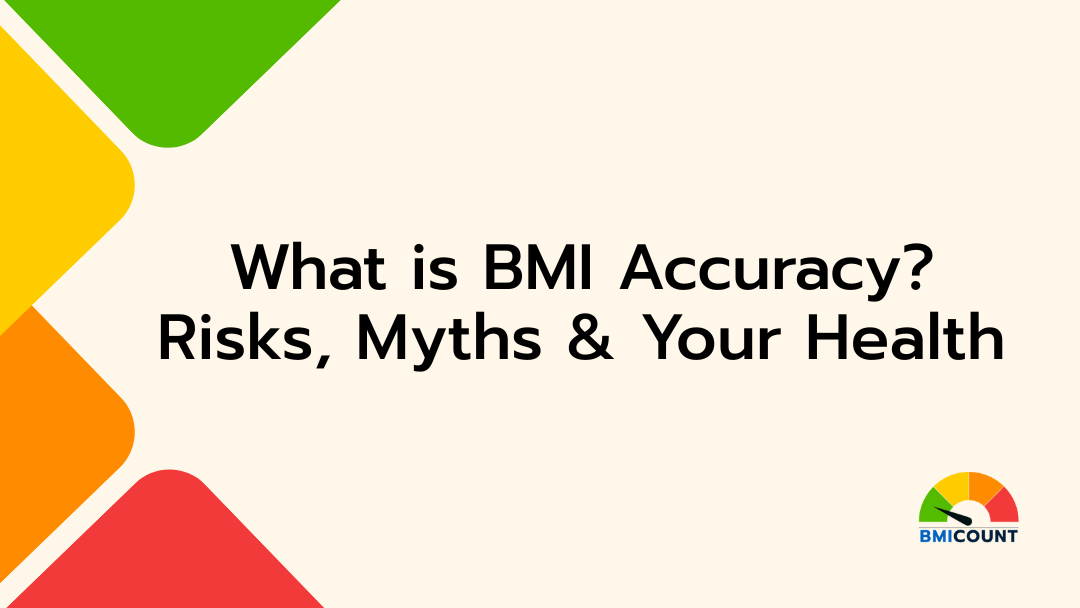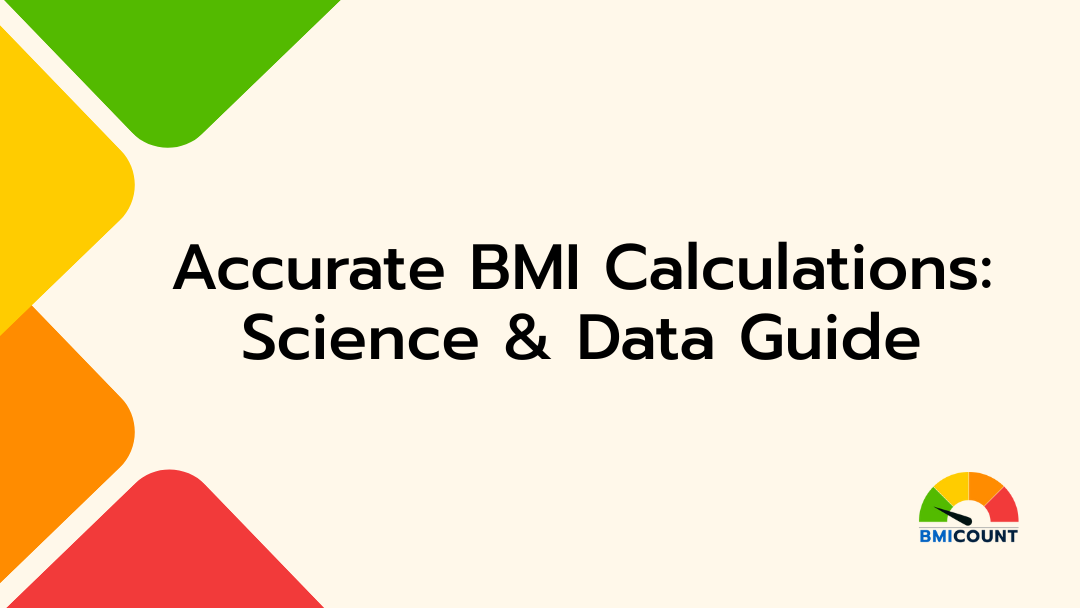Understanding your BMI categories and BMI Count formulas is a vital first step in evaluating your health. Whether you’re tracking weight for wellness or responding to medical advice, your Body Mass Index (BMI) offers a quick way to see how your weight compares to your height.
But seeing a number like 22.4 or 29.7 may leave you wondering: What does it actually mean?
This guide helps in interpreting BMI scores clearly. You’ll learn what defines the healthy BMI range, and what it means if your results fall into the underweight BMI, overweight BMI, or obese BMI categories.
While BMI is a useful screening tool, it’s not a diagnosis. It doesn’t consider factors like age or muscle mass, but it’s still widely used by the WHO and CDC to flag potential weight-related health risks.
We’ll explain each BMI category and help you understand your score—whether you fall in the normal BMI range or outside of it.
👉 Not sure of your number? Use our BMI calculator to get started.
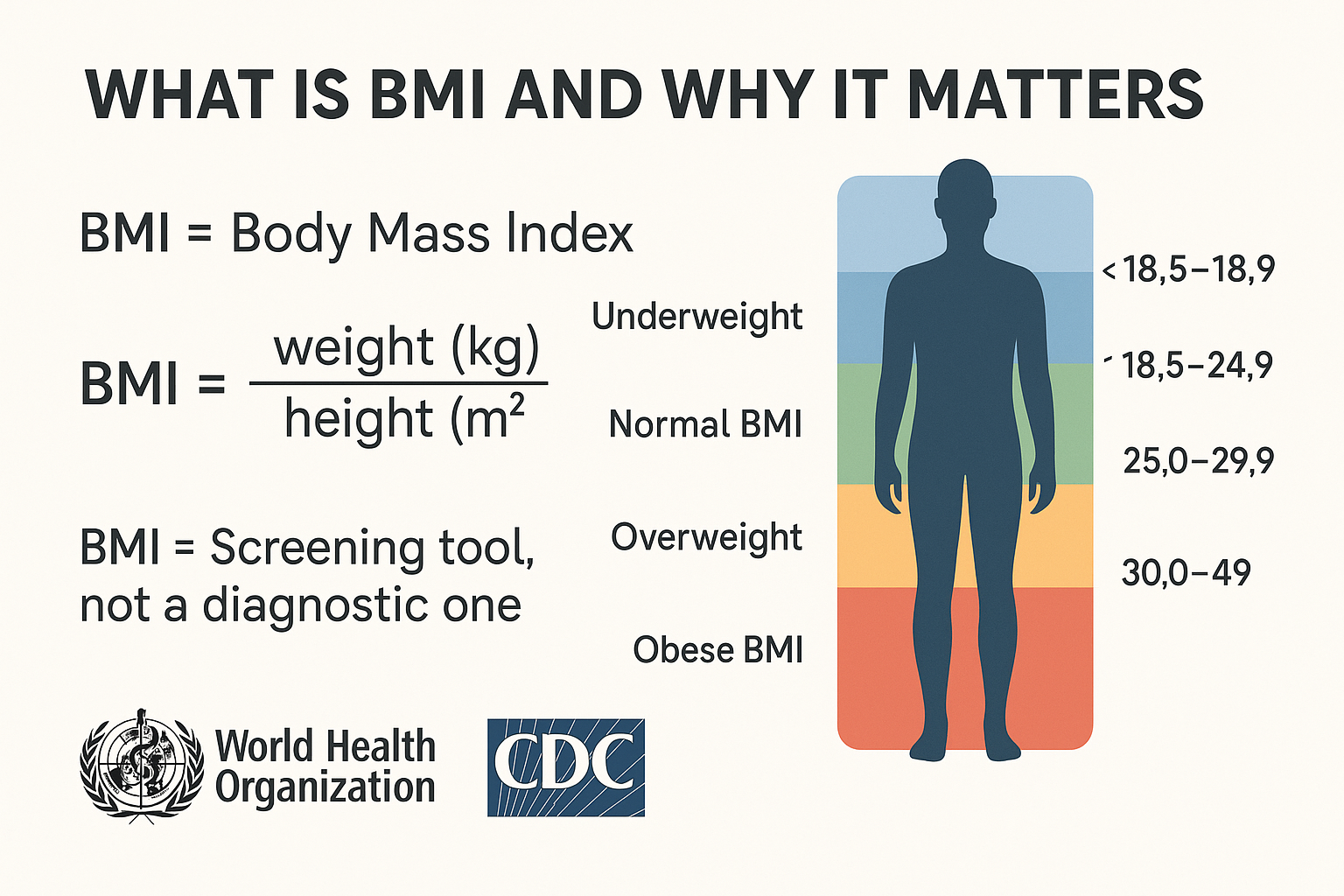
“BMI categories provide a quick way to understand if your weight might pose health risks—but the number alone doesn’t tell the full story. Think of it as a useful screening metric, not a final word on your well-being.”
What is BMI and How Is It Calculated?
Body Mass Index (BMI) is a simple numerical formula used to estimate body fat based on height and weight. It’s designed to give a general indication of whether a person is underweight, within the normal BMI range, overweight, or obese.
The formula is straightforward:
BMI = weight (kg) / height² (m²)
If you’re using pounds and inches, many online tools—including our BMI calculator—convert those for you instantly.
While BMI doesn’t measure body composition, it remains a standard method recommended by health authorities like the World Health Organization (WHO) and the Centers for Disease Control and Prevention (CDC) for classifying BMI categories in adults.
BMI Categories Quick Reference:
| Category | BMI Range |
|---|---|
| Underweight BMI | Below 18.5 |
| Normal BMI | 18.5 – 24.9 |
| Overweight BMI | 25 – 29.9 |
| Obese BMI | 30 and above |
Knowing your BMI makes it easier to start interpreting BMI scores and identifying possible health risks. However, BMI is not a one-size-fits-all measure it doesn’t consider factors like age, gender, muscle mass, or body type. That’s why it’s best used alongside other health assessments.
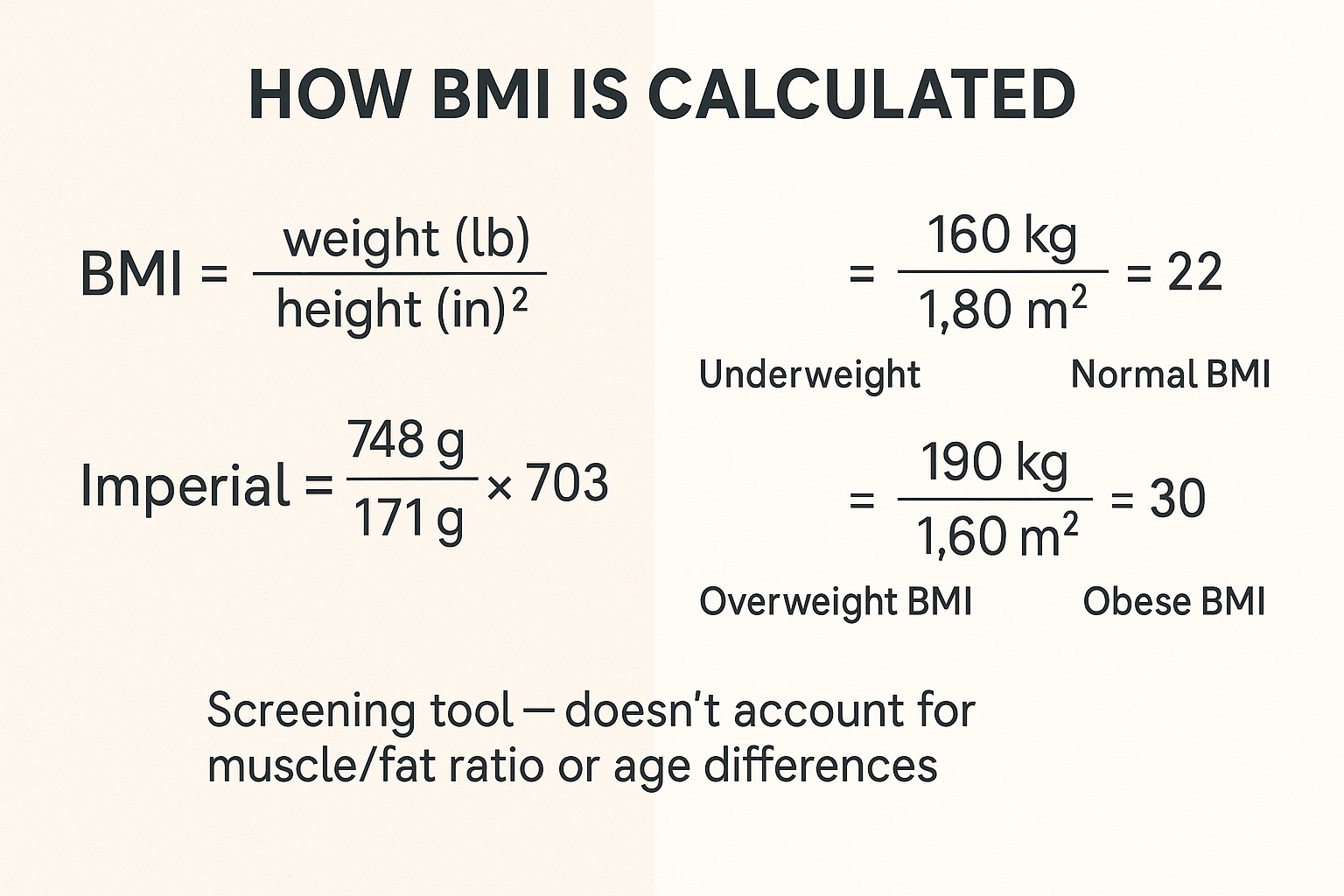
“BMI offers a fast, standardized way to assess weight status—but it doesn’t distinguish between fat and muscle, or tell the full story of your health. Use it as a starting point, not a standalone verdict.”
BMI Categories Explained (Based on WHO/CDC Standards)
Your BMI score falls into one of four main BMI categories. These categories are defined by the World Health Organization (WHO) and Centers for Disease Control and Prevention (CDC) and are widely used in clinical and general health settings to help screen for weight-related health risks.
Below is a breakdown of how BMI scores are classified:
| BMI Category | BMI Range | What It Means |
|---|---|---|
| Underweight BMI | Below 18.5 | May indicate low body fat, possible nutritional deficiency or health concerns |
| Normal BMI | 18.5 – 24.9 | Considered a healthy BMI range for most adults |
| Overweight BMI | 25 – 29.9 | Increased risk of cardiovascular issues or metabolic conditions |
| Obese BMI | 30 and above | Higher likelihood of chronic disease and health complications |
These BMI categories provide a general framework, but they don’t reflect differences in age, gender, ethnicity, or muscle mass. That’s why it’s critical to view your BMI in context—particularly for athletes, children, seniors, or individuals with unique body compositions.
Later in this guide, we’ll explore each category in more detail to help you better understand the health implications of where your score lands.
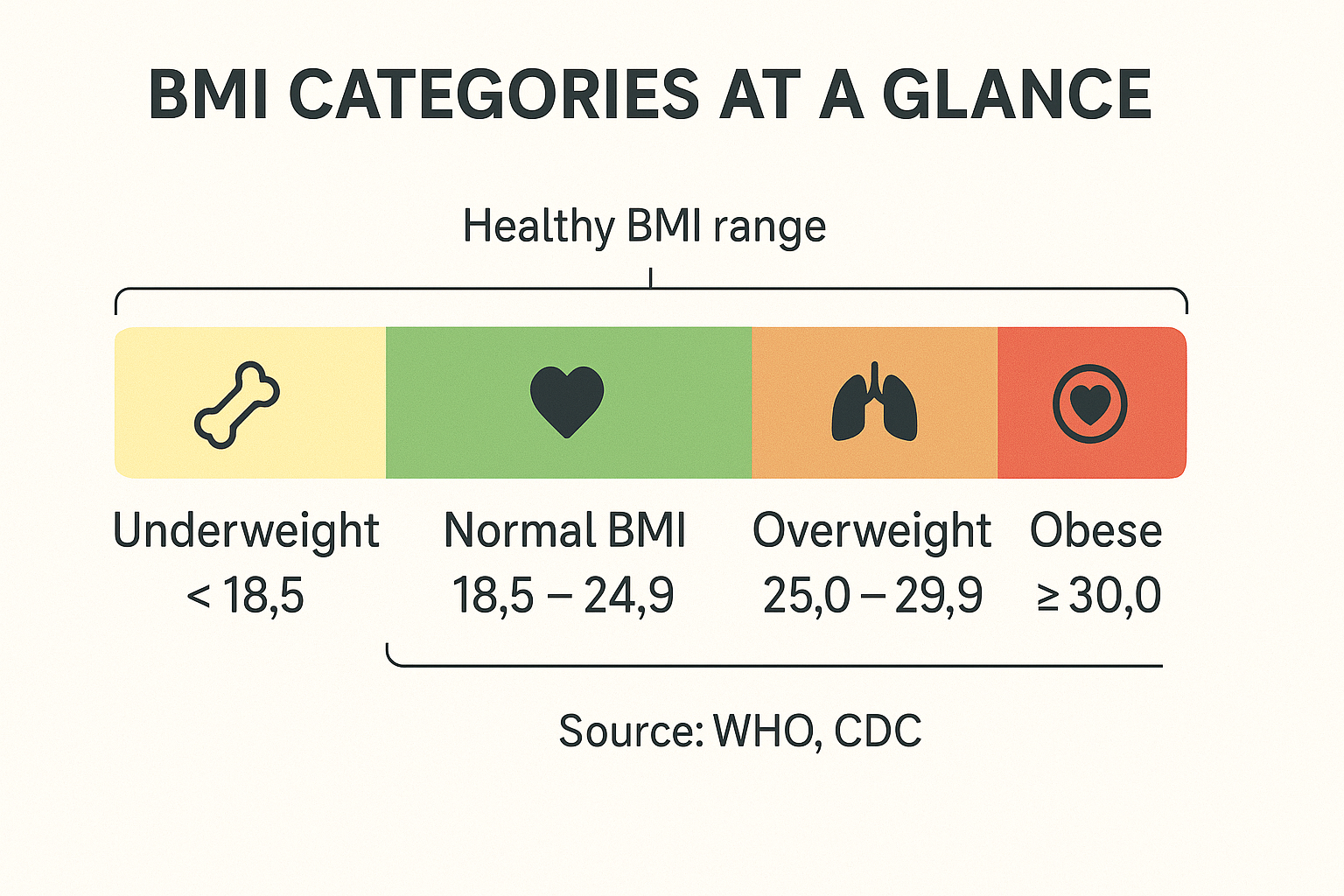
“BMI categories offer a useful benchmark for identifying weight-related health risks—but they’re not one-size-fits-all. Age, muscle, and body type matter. Think of BMI as a guide, not a verdict.”
Understanding Underweight BMI Meaning
If your BMI score falls below 18.5, you are classified in the underweight BMI category. While some people naturally have a lower body weight due to genetics or metabolism, a BMI under 18.5 can signal potential health concerns if not paired with adequate nutrition and overall wellness.
Common Health Risks of a Low BMI:
- Weakened immune system
- Nutritional deficiencies (iron, calcium, vitamin B12)
- Fatigue and decreased energy levels
- Fertility or menstrual irregularities (especially in women)
- Increased risk of bone fractures and osteoporosis
- Slower wound healing and muscle wasting
What Causes an Underweight BMI?
- High metabolism
- Chronic illness or undiagnosed health conditions
- Disordered eating (e.g., anorexia, orthorexia)
- Stress or mental health challenges
- Poor diet or nutrient absorption issues
A low BMI doesn’t always mean you’re unhealthy, but it’s a signal worth exploring further—especially if paired with other symptoms like low energy, hair loss, or frequent illness.
👉 If you’re unsure, consult with a healthcare provider or nutritionist to identify any underlying causes and create a plan for reaching a healthy BMI range.
➡️ Relevant Tool: Use our BMI Calculator for Women for gender-specific insights, especially if underweight concerns relate to reproductive health or hormonal imbalances.
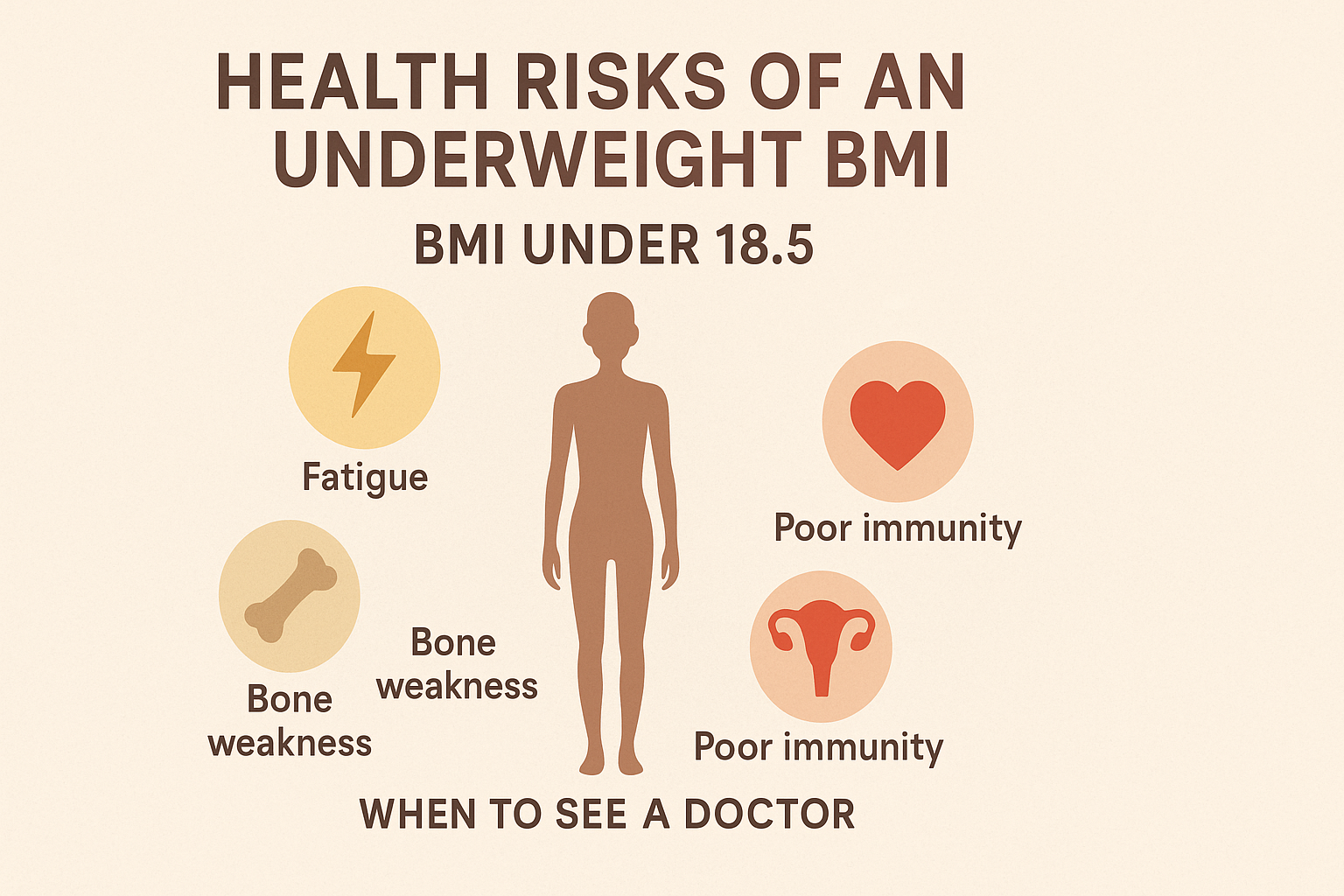
“An underweight BMI may seem harmless, but it can quietly affect your immune system, bone density, and energy levels. If your BMI is below 18.5, your body might be signaling that it needs more nourishment, strength, or medical attention.”
What is a Healthy BMI Range?
A healthy BMI range falls between 18.5 and 24.9, according to the WHO and CDC. This is often referred to as the normal BMI, and it’s considered the range where most adults are least likely to experience weight-related health complications.
Staying within this range generally indicates a balanced relationship between your height and weight—but remember, it’s only one piece of the wellness puzzle.
Signs You May Be Within a Healthy BMI:
- Consistent energy levels
- Regular menstrual cycles (for women)
- No chronic weight-related health issues
- Balanced muscle-to-fat ratio
- Proper immune function and recovery
But Don’t Be Misled:
A normal BMI doesn’t guarantee you’re healthy. You could still have high visceral fat, poor cardiovascular fitness, or nutritional deficiencies. That’s why pairing BMI with other health indicators—like waist circumference, diet quality, physical activity, and body composition—is important.
BMI also doesn’t distinguish between lean muscle and fat mass, so fit individuals with high muscle density might fall outside this range even if they’re in excellent health.
➡️ Helpful Resource: Explore how your daily habits affect your BMI in our BMI & Lifestyle Guide.
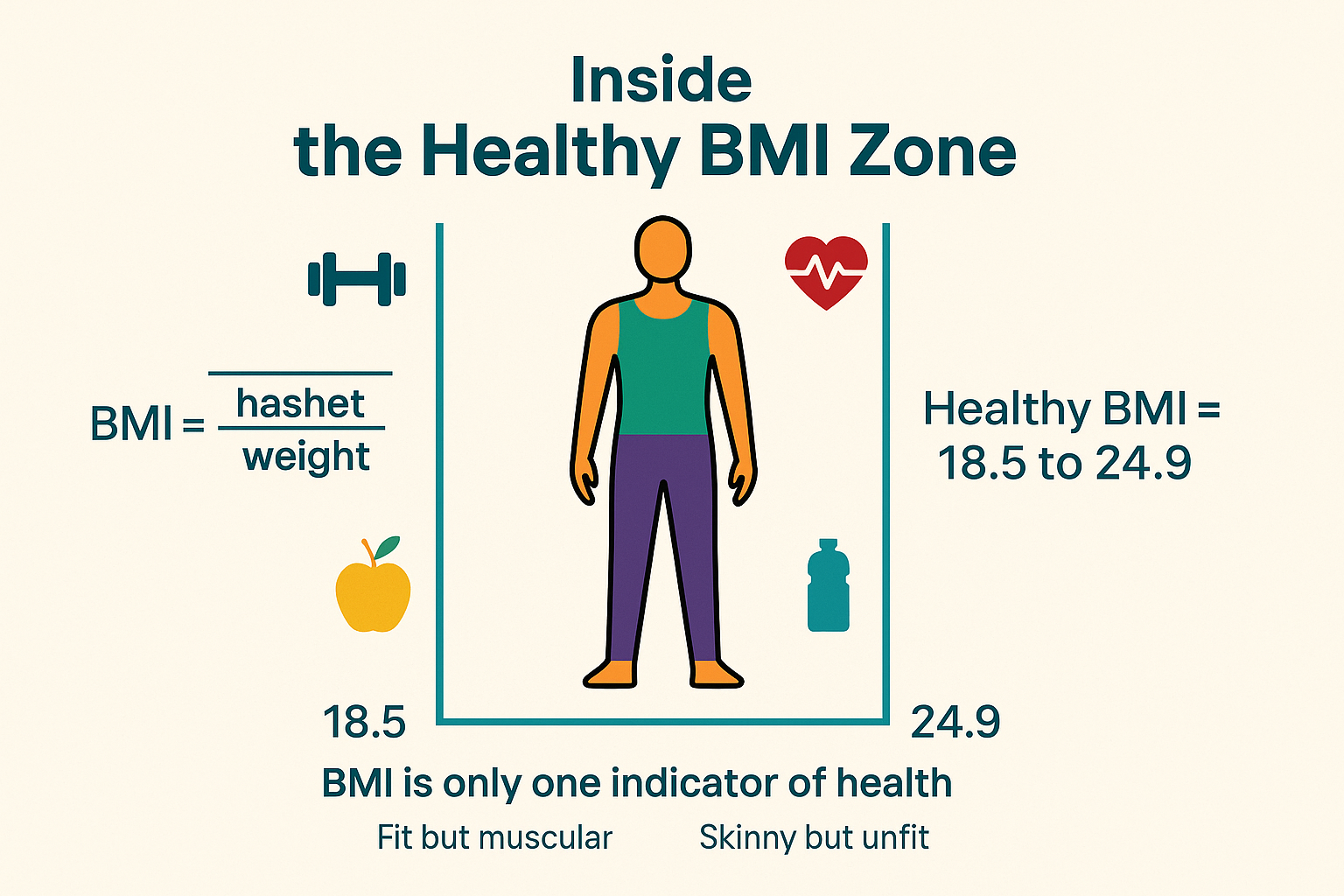
“Falling within the healthy BMI range is a great sign—but it doesn’t automatically mean you’re in perfect health. A balanced lifestyle, regular activity, and good nutrition are just as important as the number itself.”
Overweight BMI Definition
If your BMI score falls between 25.0 and 29.9, you are considered to be in the overweight BMI category. This range indicates that your body weight is higher than what’s generally recommended for your height—and it may increase your risk for certain health issues if not managed proactively.
But not all overweight readings are created equal. For example, athletes or individuals with high muscle mass may have a BMI in this range without carrying excess fat. That’s why interpreting BMI scores requires context.
Health Risks Often Associated with Overweight BMI:
- Elevated blood pressure
- Increased risk of type 2 diabetes
- Higher chances of developing heart disease
- Strain on joints, leading to early arthritis
- Fatigue or reduced stamina
Muscle vs. Fat: Why It Matters
BMI doesn’t differentiate between muscle and fat mass. So, someone who lifts weights or plays sports may technically fall into the overweight BMI range without being unhealthy. Still, if you’re unsure, additional tests like body fat percentage or waist circumference can provide a clearer picture.
The key is to evaluate how your weight affects your lifestyle, comfort, and health markers—not just the number on the chart.
➡️ Related Tool: Try our BMI Calculator for Men—ideal for those with larger builds or high muscle mass, where standard BMI may be misleading.
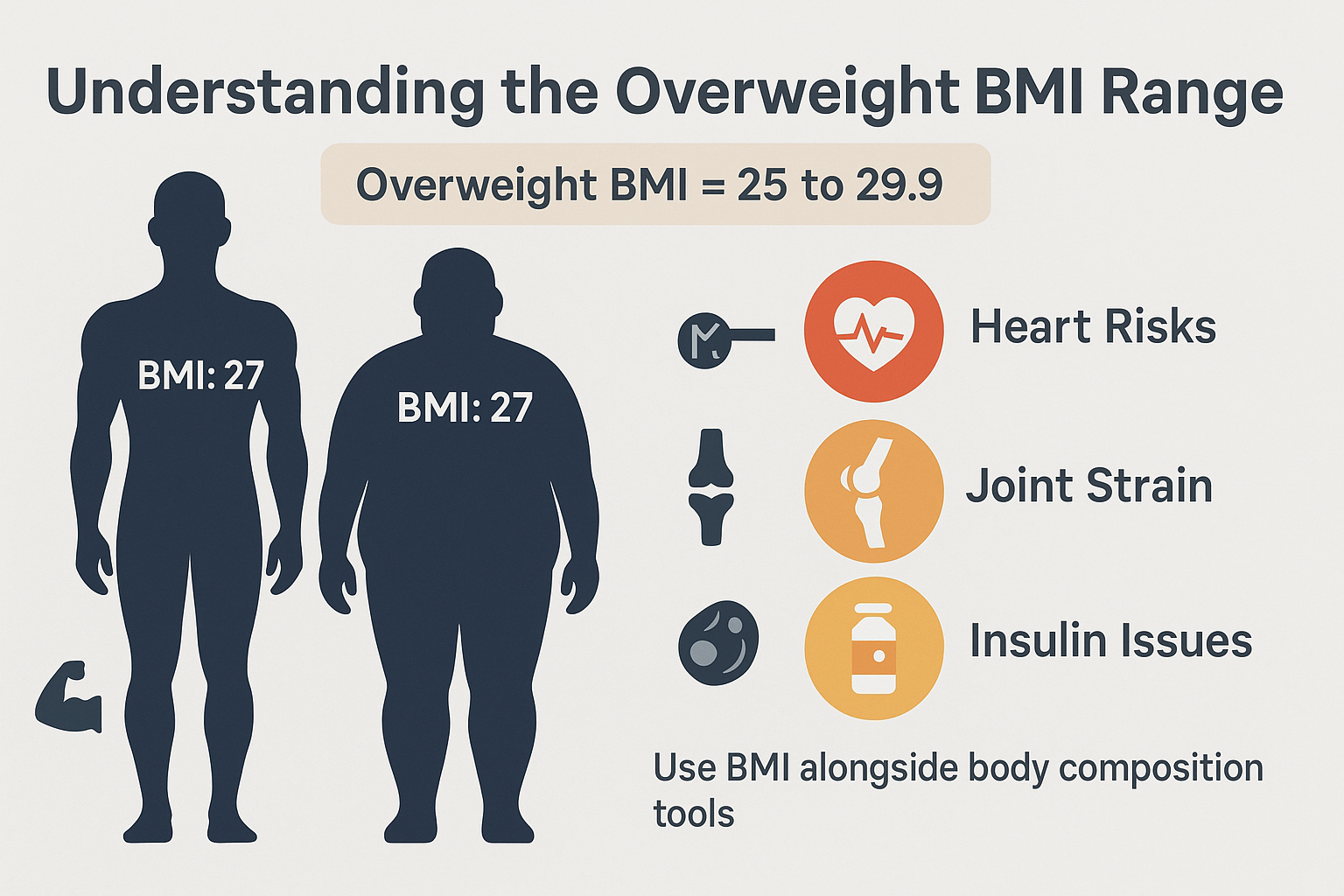
“An overweight BMI doesn’t always mean you’re unhealthy—but it does mean your body is carrying extra weight. The difference between muscle and fat, your activity levels, and your health habits all matter just as much as your BMI score.”
Obese BMI Meaning
A BMI score of 30 or higher falls into the obese BMI category, which is linked to a significantly increased risk of chronic diseases. Obesity is not just a matter of extra weight—it’s a medical classification that signals your body may be under increased stress, especially if that weight is carried as excess fat around the abdomen.
Obesity affects nearly every system in the body and increases the likelihood of developing long-term health conditions if left unaddressed. However, a high BMI is not the end of the story—it’s the beginning of an opportunity to make positive, lasting changes.
Common Health Risks Linked to Obese BMI:
- Type 2 diabetes
- High blood pressure and cholesterol
- Cardiovascular disease and stroke
- Sleep apnea and breathing problems
- Gallbladder disease and certain cancers
- Mental health challenges (e.g., depression, self-esteem issues)
The Importance of Taking Action with Compassion
Weight gain often involves a mix of genetics, lifestyle, environment, and emotional factors. If you’re in the obese BMI range, it’s crucial to seek support without shame. Healthy change is possible, and progress happens over time—not overnight.
Start by speaking to a healthcare provider. They may recommend dietary adjustments, physical activity, or tests to assess your overall metabolic health—not just your weight.
➡️ Explore: BMI Calculator for Seniors for age-specific insight, as weight-related risks and goals shift with age.
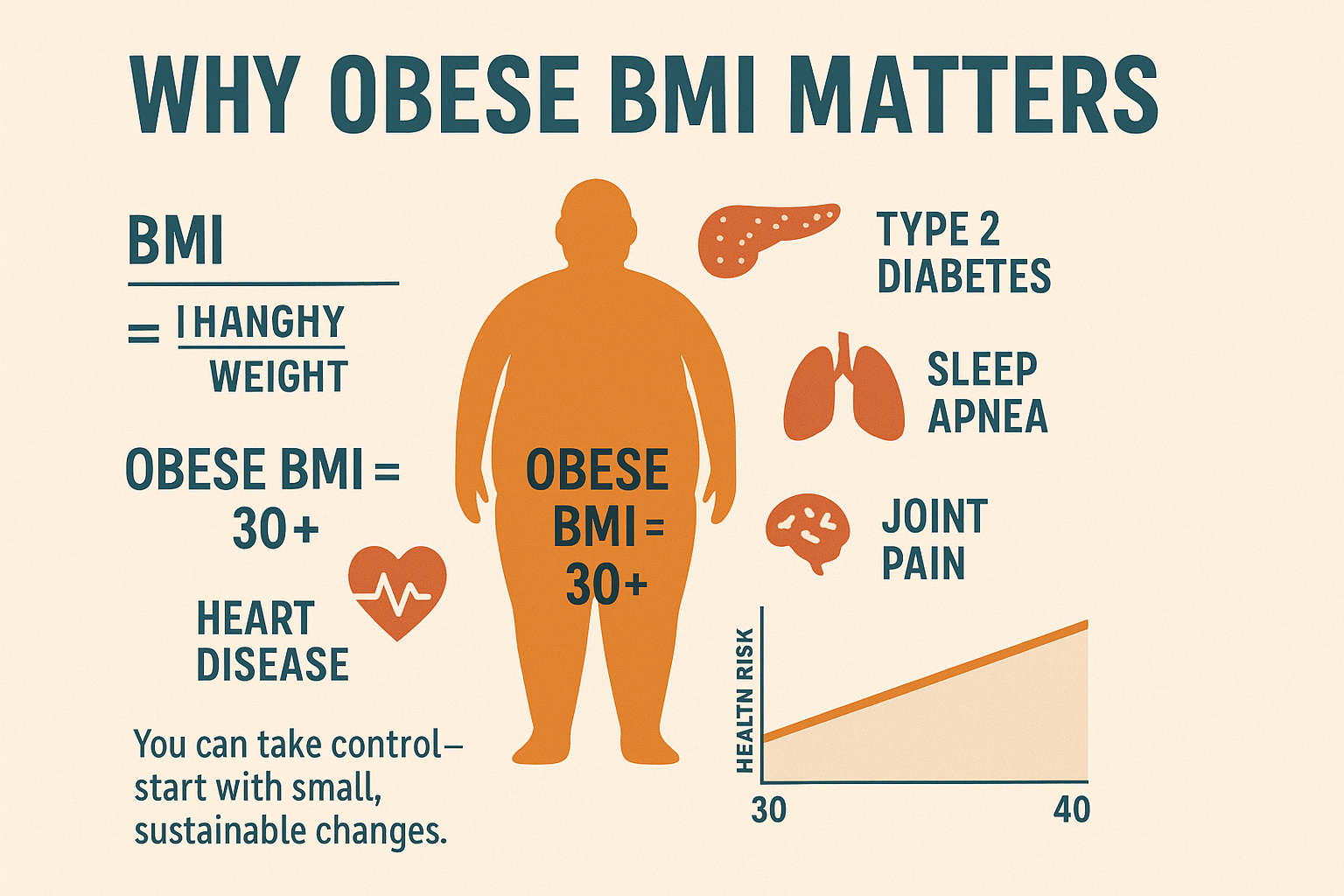
“Obesity isn’t just about the number on the scale—it’s about how excess weight affects your body’s ability to function and thrive. If your BMI is 30 or higher, think of it as a wake-up call, not a judgment. Support, guidance, and sustainable change are within reach.”
Interpreting BMI Scores in Context
While BMI categories offer a helpful starting point, they don’t tell the whole story. Interpreting BMI scores accurately requires context—because the same number can mean different things for different people.
BMI does not measure:
- Body fat percentage
- Muscle mass
- Bone density
- Gender-specific fat distribution
- Ethnic or age-based variations in body composition
For example, a highly active person with significant muscle mass may have a BMI in the overweight or obese range, despite being metabolically healthy. On the other hand, someone within a normal BMI could have high levels of visceral fat or low muscle tone, increasing hidden health risks.
Better Context Through Additional Metrics:
To get a full picture of your health, consider these additional tools:
- Waist circumference (especially for abdominal fat)
- Body fat percentage (via calipers or DEXA scans)
- Blood pressure and cholesterol levels
- Lifestyle habits (diet, exercise, sleep, stress)
BMI is best viewed as a screening metric—an alert that signals when a deeper evaluation may be needed.
➡️ Want to dive deeper? Read our full BMI Accuracy, Risks & Misconceptions Guide for a breakdown of how BMI can mislead and when it should be used with caution.
➡️ External Reference: Learn more from the CDC on BMI limitations.
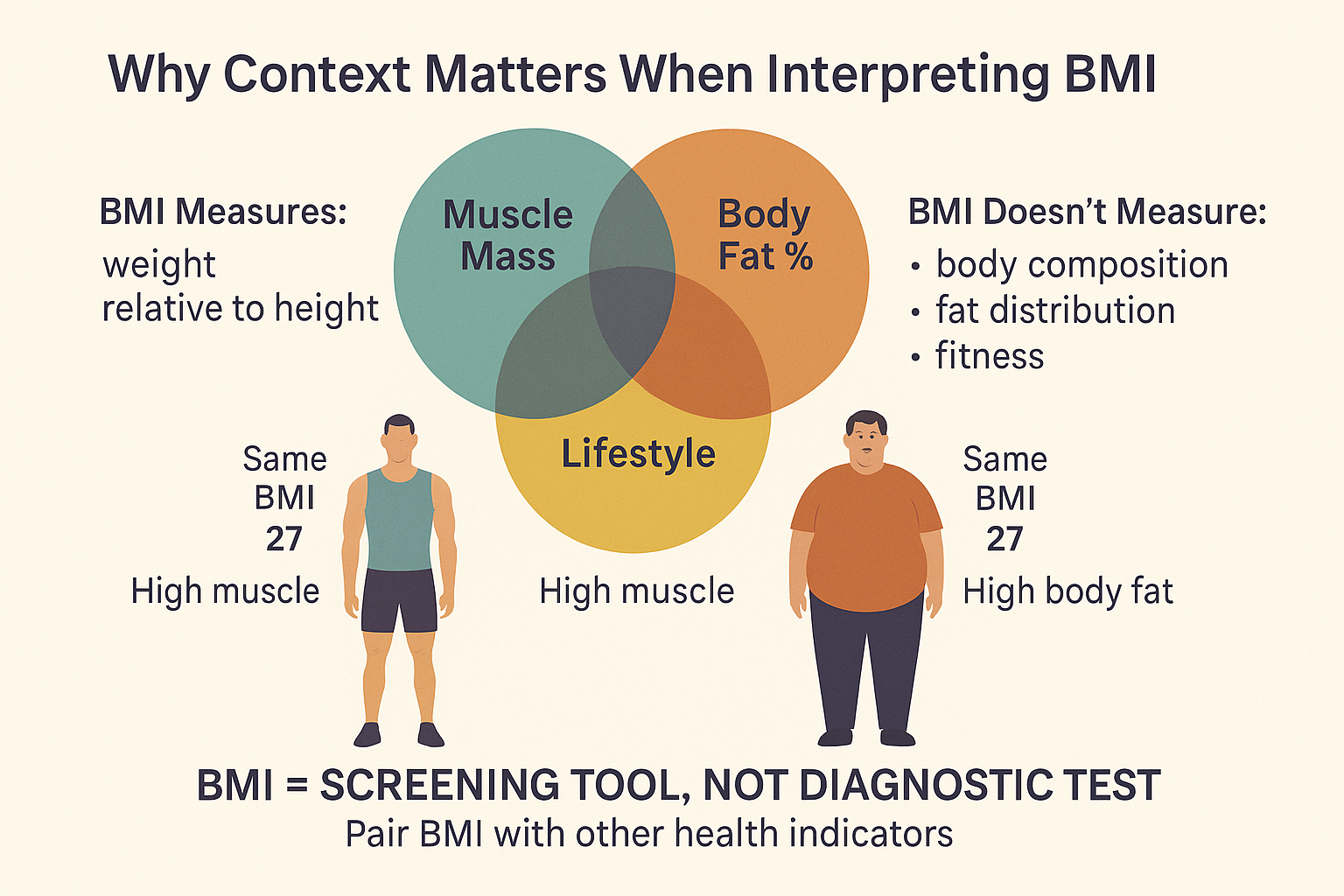
“Interpreting BMI scores correctly means understanding what they can’t tell you. Age, muscle, and metabolic health all matter. Use BMI to open the conversation—not close it.”
What to Do After You Know Your BMI
So, you’ve checked your BMI and found out where you fall within the standard BMI categories—whether it’s underweight, within the healthy BMI range, overweight, or obese. What comes next?
The most important step is to interpret your BMI score in the context of your personal health—then take action based on what’s most relevant for your age, gender, and lifestyle.
Steps to Take Based on Your BMI Category:
- Underweight BMI (<18.5):
Focus on nutrient-dense foods, strength-building exercise, and medical evaluation for underlying conditions.
➡️ Use our BMI Calculator for Women for insights related to hormones and body composition. - Healthy BMI Range (18.5–24.9):
Maintain balanced eating habits, regular physical activity, and stress management.
➡️ Explore holistic habits in our BMI & Lifestyle Guide. - Overweight BMI (25–29.9):
Evaluate lifestyle habits—especially diet and activity—and make sustainable changes.
➡️ Check our BMI Calculator for Men if you have a muscular build. - Obese BMI (30+):
Talk to a healthcare provider about structured plans for weight loss and managing chronic risks.
➡️ Use our BMI Calculator for Seniors for age-adjusted guidance.
Use BMI Tools That Match Your Life Stage:
Making sense of your BMI is about more than a label—it’s about using that data to build a healthier, more informed lifestyle.
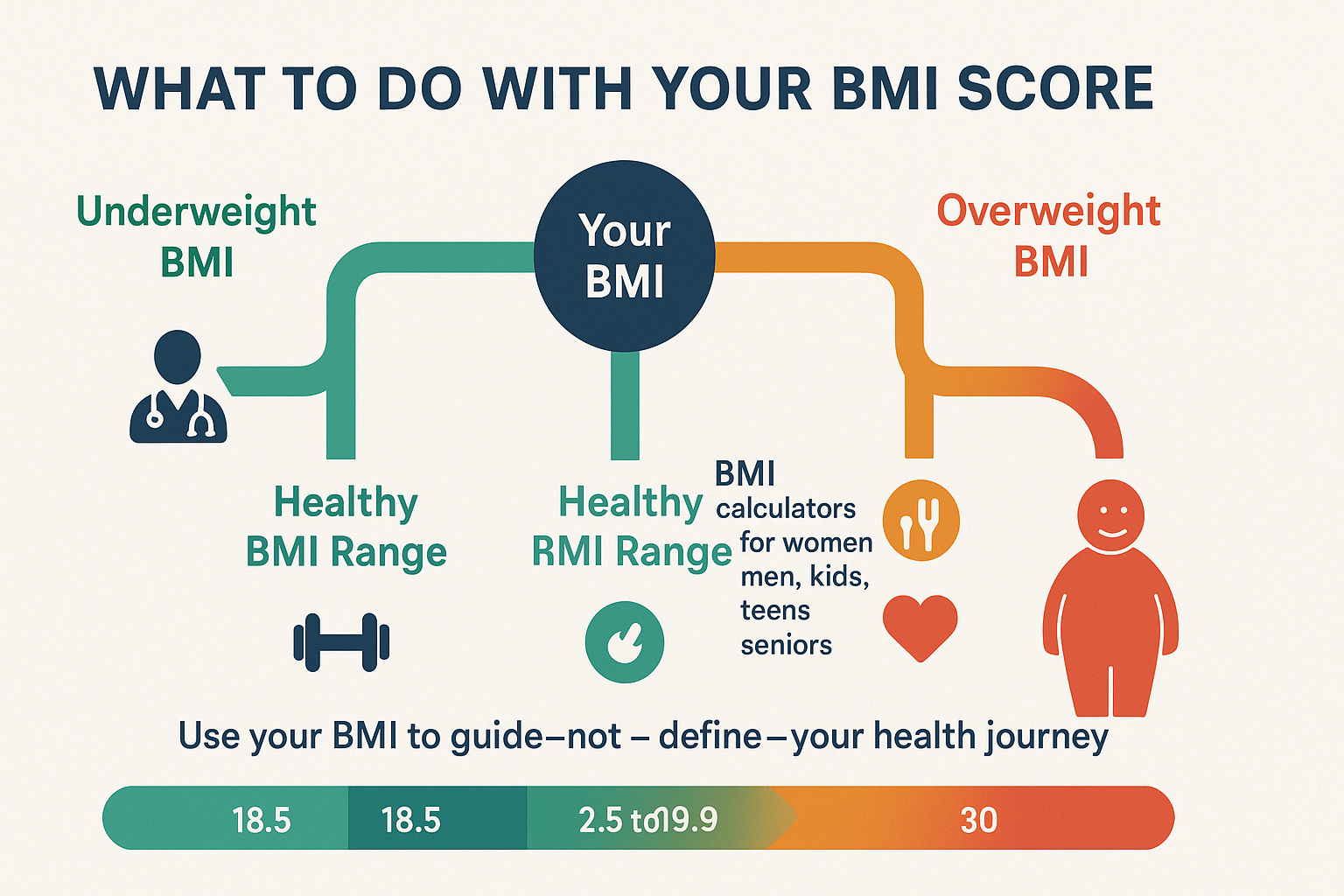
“Your BMI is only useful if you do something with it. Whether you need to gain strength, maintain wellness, or reduce risk, the right tools and support can help you turn your BMI score into a meaningful plan of action.”
Frequently Asked Questions
How do I calculate BMI manually?
Use one of two formulas:
- Metric: weight (kg) ÷ height (m²)
- Imperial: (weight (lbs) ÷ height (in)²) × 703
Ensure you’re using the correct units throughout to avoid errors.
Should I use Metric or Imperial for BMI?
Either is acceptable, as long as you’re consistent. Metric is used in most countries outside the U.S., while Imperial is common within the U.S. Just be sure not to mix them during entry.
Why does my BMI seem high even though I’m fit?
BMI doesn’t account for muscle mass. Athletes and muscular individuals may have high BMIs despite low body fat and excellent health. In such cases, body composition testing provides better insight.
How often should I check my BMI?
For most adults, checking BMI every 3 to 6 months is sufficient. It’s more useful as a long-term trend indicator than a short-term tracker. Children’s BMI should be monitored by pediatricians during checkups.
Does age or gender affect BMI results?
The calculation remains the same, but interpretation differs. For example, BMI in children is based on percentiles, while older adults may have different health priorities such as muscle preservation.

